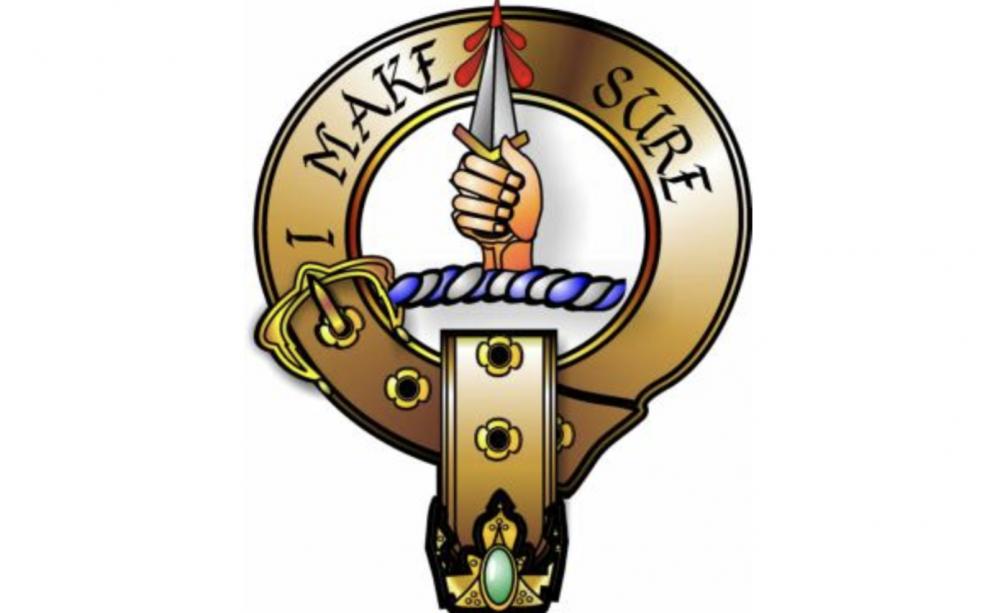I like to be sure about whatever I’m undertaking at any given moment, but that’s not always possible. Sometimes hope supersedes certainty and I’m forced to live in the shady belief that I’m on the right course. But doubt can come creeping in, sometimes crippling in its effect. A plan stalls; I start over…
 It wasn’t always like this. Back in February of 1306, one of my forebears, Roger de Kirkpatrick, was with Robert Bruce when he (the Bruce) arranged to meet with John Comyn, his principal rival to the Scottish throne, at Greyfriars Abbey in Dumfriesshire in southern Scotland. Bruce and Comyn got into a quarrel in front of the high altar and in the heat of the moment, Bruce stabbed Comyn, a grievous enough act anywhere but blasphemous under the circumstances. Bruce fled the scene, telling his henchmen who were waiting outside what he had done. But then he added, “I don’t know if I killed him!” to which Kirkpatrick replied (in good Scots), “I mak siccar!” Kirkpatrick went back inside the church, found Comyn bleeding but still alive, and finished the job. For this act of cruel certainty, Kirkpatrick was given a shield and crest with a hand holding a dagger dripping blood under the motto I Mak Siccar—I make sure.
It wasn’t always like this. Back in February of 1306, one of my forebears, Roger de Kirkpatrick, was with Robert Bruce when he (the Bruce) arranged to meet with John Comyn, his principal rival to the Scottish throne, at Greyfriars Abbey in Dumfriesshire in southern Scotland. Bruce and Comyn got into a quarrel in front of the high altar and in the heat of the moment, Bruce stabbed Comyn, a grievous enough act anywhere but blasphemous under the circumstances. Bruce fled the scene, telling his henchmen who were waiting outside what he had done. But then he added, “I don’t know if I killed him!” to which Kirkpatrick replied (in good Scots), “I mak siccar!” Kirkpatrick went back inside the church, found Comyn bleeding but still alive, and finished the job. For this act of cruel certainty, Kirkpatrick was given a shield and crest with a hand holding a dagger dripping blood under the motto I Mak Siccar—I make sure.
So when I tell you I would like to be sure about whatever I’m undertaking at any given moment, pay attention: you know where I’m coming from, or at least from whence I came. Certainty is buried deep in my DNA. The problem, of course, is that murder in a house of God notwithstanding, certainty is a hard commodity to come by these days when every morning we waken to another incredulous news cycle. Mexico will pay for the wall. Tariffs aren’t going to cost Americans anything. I am the Chosen One. Today is Tuesday so I think I’ll buy Greenland.
So how does one discern certainty—the quality of being reliably true—at a time when fanciful lying has been raised to a Presidential art form? Where is the proof? Sure; there are ombudsmen and fact-checkers among us but who is checking their facts? If we’re left to rely solely on our own senses, how do we make sure that our receptors are functioning at full capacity and that what they’re receiving is untainted by even the faintest ghost of unintentional bias let alone fake news?
The problem with certainty—or more precisely, the lack of it—is that we are living in a constant state of dubious disbelief. Did that really happen? Did he really say that? What is that supposed to mean? Doubt is a desert; you can’t cross it without at least an occasional oasis of certainty. But a tiny speck of an oasis can be awfully difficult to find in a vast desert; absent a damn good map, a faint guiding star is the best we can hope for. I don’t know about you but I’m still looking for mine. In the meantime, I lurch from point-to-point, hoping things will change.
But back to the 14th Century and that church in Scotland. Kirkpatrick has dispatched Comyn but apparently that’s not good enough. Bruce needs proof. That comes when another of Bruce’s men, Sir Robert Fleming, exits the church holding Comyn’s bloody severed head aloft exclaiming, “Let the Deed Shaw!” Now the Flemings have a crest and motto, too.
You can be sure of it.
I’ll be right back.
Jamie Kirkpatrick is a writer and photographer with homes in Chestertown and Bethesda. His work has appeared in the Washington Post, the Baltimore Sun, the Pittsburgh Post-Gazette, the Philadelphia Inquirer, the Washington College Alumni Magazine, and American Cowboy magazine. “A Place to Stand,” a book of photographs and essays about Landon School, was published by the Chester River Press in 2015. A collection of his essays titled “Musing Right Along” was published in May 2017; a second volume of Musings entitled “I’ll Be Right Back” was released in June 2018. Jamie’s website is www.musingjamie.com



Bob Moores says
Good, Jamie. We have more than enough uncertainty in our lives without our illustrious nutcase constantly compounding it with every tweet. Hopefully we can get back to normal uncertainty by January 2021.
Jamie Kirkpatrick says
Amen.